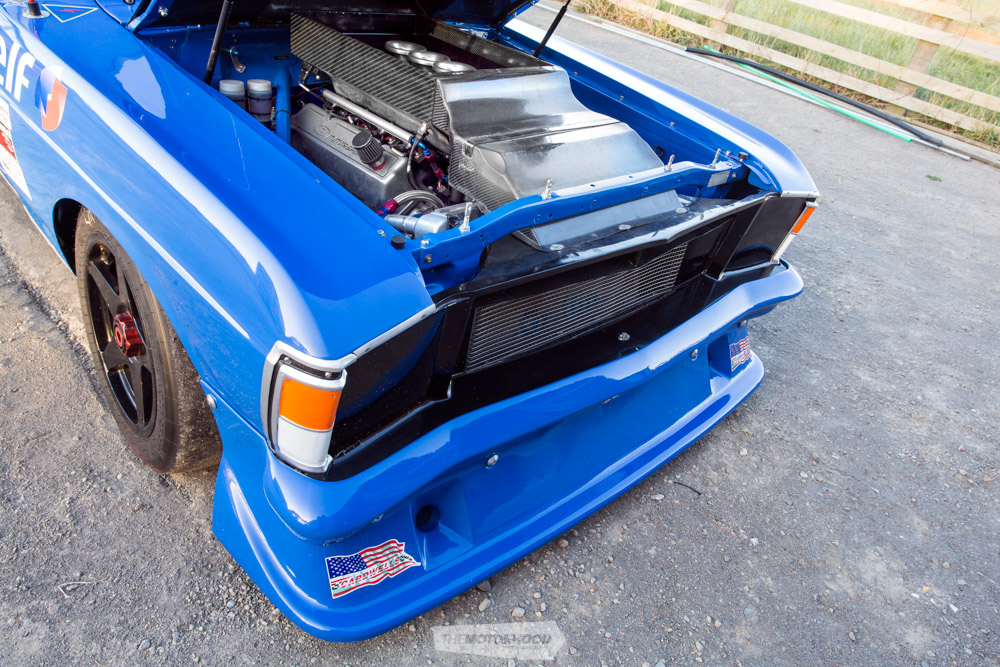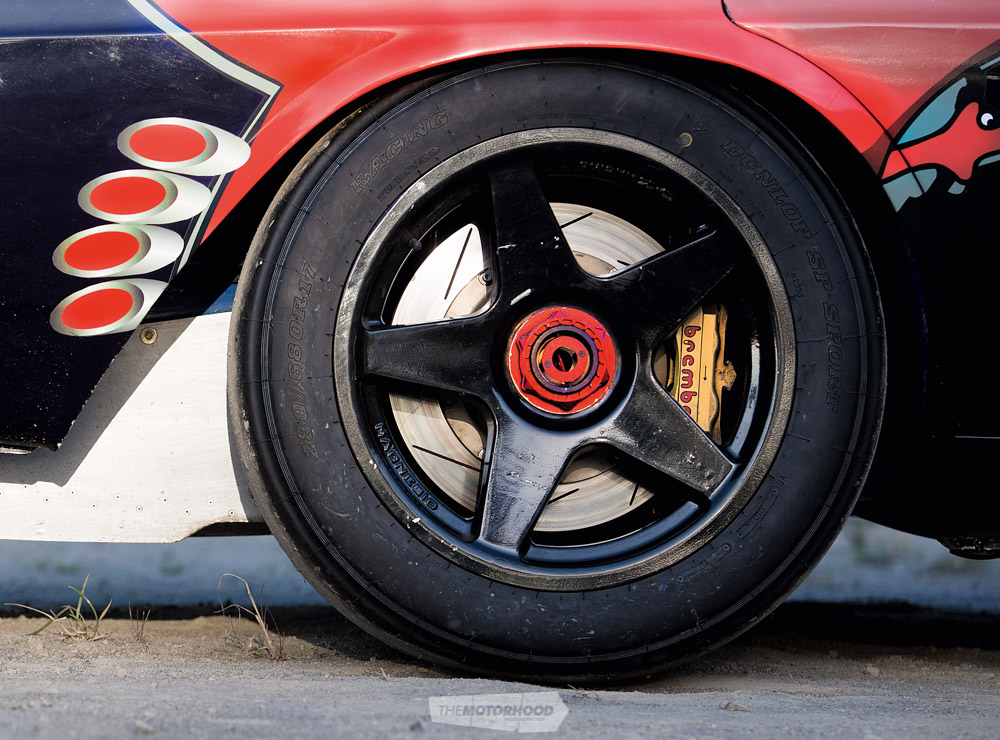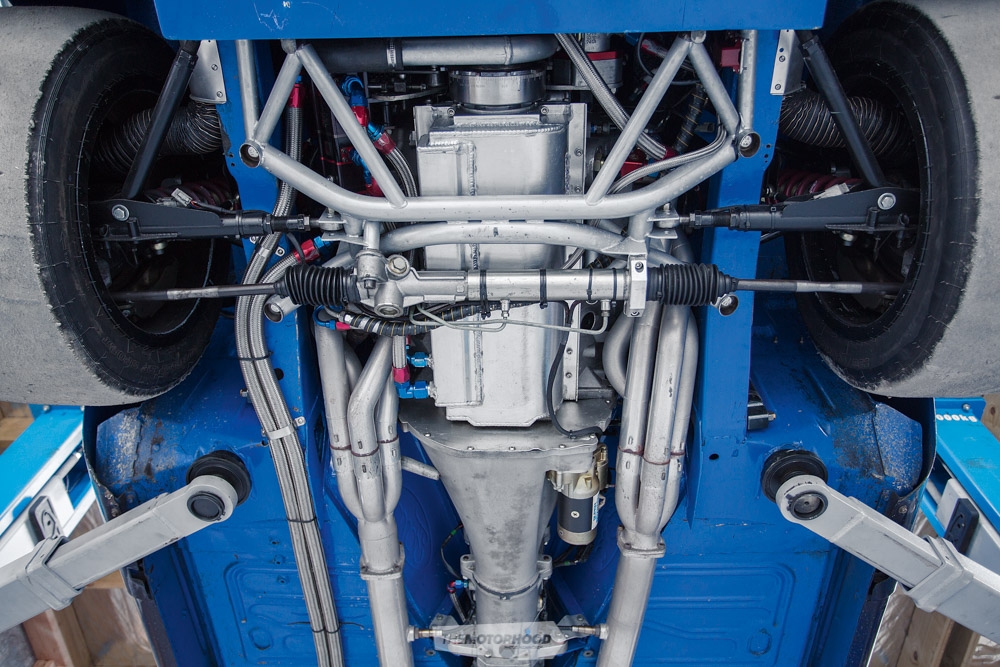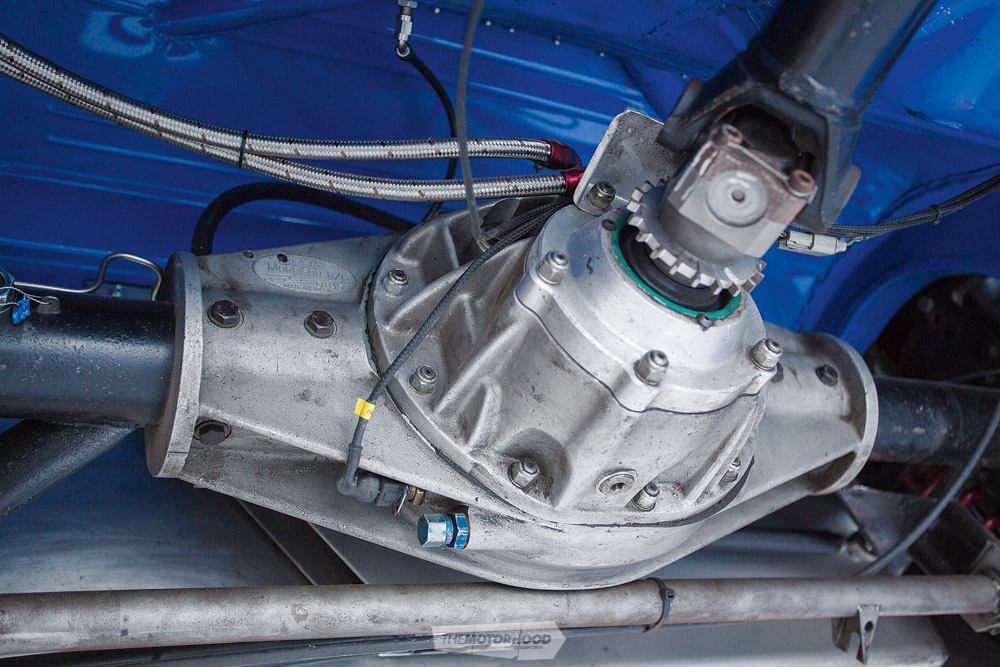Take one classic ’70s Australian icon, add a healthy dose of late-model V8 supercar parts, and you end up with something pretty special!

Ernie Stevens loves his big old Falcons. He’s owned a few over the years — quite a few, in fact. Because of this, he decided that, since he’d enjoyed them so much on the road, he needed one to give a damn good thrashing to on the track. We’re sure that, when Ernie’s 1970 XY Falcon rolled off the production line, the person responsible for tightening the final bolt had no idea what would become of it almost 45 years later. In fact, we’re pretty sure no one could ever have predicted the lengths Ernie would go to in building the ultimate Falcon. While we often dream of making our favourite road car into a kick-arse race car — and Ernie is no different — he just decided to do things a little differently from most and take things to a whole new level.

When it comes to building a race car using a road-going version as a donor vehicle, it’s mostly just a case of boning it out, chucking on some better brakes and suspension, and shoehorning in the grumpiest engine you can find. This works for most, but some people aren’t wired like that, preferring to think outside the box and build something unique. Ernie is one of those people. This is where the supercar connection comes into play. Rather than trying to reinvent the wheel, Ernie decided that diving into the V8 Supercar research and development pool was a far better option. He says that getting the parts he required was relatively easy. After a few phone calls, it wasn’t long before V8 Supercar front and rear ends and a Holinger six-speed sequential gearbox were winging their way to New Zealand.
As we mentioned before, Ernie has had a few Falcons in his time, and he already had a suitable donor vehicle sitting in his shed. Bought off a New Plymouth car yard many years before, its days of quietly beating the streets were well and truly over. Everything not required for the car’s new life as a dedicated circuit machine was ripped out and discarded, leaving only a bare shell. The ‘antiquated’ Falcon front end was chopped out so the fully adjustable torsion bar set-up used in the supercar could be grafted in. Down the back, the original frame rails were retained, but, again, like the front, everything else was discarded. In its place now sits the nine-inch diff, four-bar set-up, and Watts linkage.At the pointy end sit massive AP rotors clamped by six-piston calipers, while at the blunt end reside equally enormous Brembo rotors and four-piston calipers, all of which are hidden behind 17-inch supercar lightweight wheels.

Ernie says that, exterior-wise, pretty much every panel has been modified in some way. The bonnet, boot lid, rear wing, and bumper are carbon fibre. The front splitter is fibreglass, but in time will also be carbon fibre — once Ernie has decided on a final workable design, that is. A coat of DuPont dark blue paint, along with a cool graphics package, finishes off the outside nicely. The interior, as you can imagine, is all about safety and function. A MANZ-approved chromoly roll cage takes up most of the available room, with bars in every which direction. Taking up the rest of the space are Racetech buckets equipped with five-point harnesses, a Tilton pedal box, and a MoTeC dash. Ernie has also installed a full on-board fire system, with nozzles in the engine bay, above his feet, and in the boot — a wise move considering the investment he’s made.

Allan ‘Midge’ Mallet was entrusted with the task of assembling the stroked 351 Windsor that had been chosen to provide rapid forward momentum. While Ernie’s not divulging the exact capacity, he’s quick to point out that it’s been built with the best bits available. Parts fitted include Wiseco pistons, Carrillo rods, ARP bolts, SVO alloy heads, Kinsler EFI — the list just goes on. Wiring the beast proved to be a mammoth task, due to the complexity of it all. It was here that everything came to a grinding halt, with Ernie becoming disillusioned with the build as it threatened to spiral completely out of control. Eventually, the car was uplifted and brought back to New Plymouth to be parked up and forgotten about for a while.
If it wasn’t for a chance visit by a good friend one day, the car might still be sitting in Ernie’s shed, unfinished to this day. Ernie’s friend simply asked one question, “When are you going to finish your car?” This question was echoed by Ernie’s very patient wife Heather (albeit with a bit more colourful language thrown in). Not wanting to be asked twice, Ernie dusted the Falcon off and handed it over to Mike and Sue from Reaction Racing in Auckland to start again with the wiring and get the thing going.

Mike and Sue essentially had to start from scratch, wiring in the MoTeC ECU, dash, and ignition, as trying to redo other people’s work was proving to be a nightmare. After many a long day and night spent running cables the full length of the car and connecting up everything electric, they finally had the Falcon ready for Ernie to come up and see what had been created.
He couldn’t have been happier with the final result, and the big old Falcon is as good as Ernie had imagined it would be. It wasn’t built to fit into a specific class; it was built purely so Ernie could have a whole lot of fun in it on the track, and that is exactly what he now can do.

Ernie Stevens
Age: 65
Occupation: Managing director
Previously owned cars: Austin A40, Mini, MkIII Zephyr, Mazda RX-3 coupe, GT-HO Phase II 1969 Falcon
Dream car: GT-HO Phase III Falcon
Why the Falcon? To have fun; had to build one as a race car as I have owned a few road cars
Build time: Too long
Length Of Ownership: The same
Ernie thanks: Great support from Mike and Sue at Reaction Racing, who got the car going; Midge Mallett, engine builder; Tony Cardwell and the staff at Cardwell Racing Supplies; ELF Lubricants; Heather, especially for putting up with all the problems with building the car and not complaining

1970 Ford Falcon XY sedan
Engine: Stroked 351 Windsor, dry-sumped, Wiseco pistons, ARP fasteners, Carrillo rods, aluminium SVO heads, custom cam, Kinsler EFI, MoTeC CDI-8 ignition, MoTeC ECU
Driveline: 2013 V8 Supercar Holinger six-speed sequential gearbox, Tilton clutch, V8 Supercar–spec Ford nine-inch diff
Suspension: Adjustable torsion bar with coilover front, four-link Watts linkage (all ex-supercar), custom shocks, Eibach springs, custom front arms
Brakes: Tilton pedal box, AP six-pot front calipers, AP rotors, Brembo four-pot rear calipers, Brembo rotors
Wheels/Tyres: V8 Supercar 17×11-inch rims, 280/680R17 Dunlop slicks
Exterior: Carbon-fibre bonnet, boot, and rear bumper; fibreglass front splitter
Chassis: Original Falcon chassis, front cross member removed, rear springs removed
Interior: Racetech seats, MoTeC dash, chromoly roll cage, on-board fire system, two-way radio communication
Performance: Yet to be truly tested
This article originally in NZV8 issue No. 109 — to get your grubby mitts on a print copy, click on the cover below:









